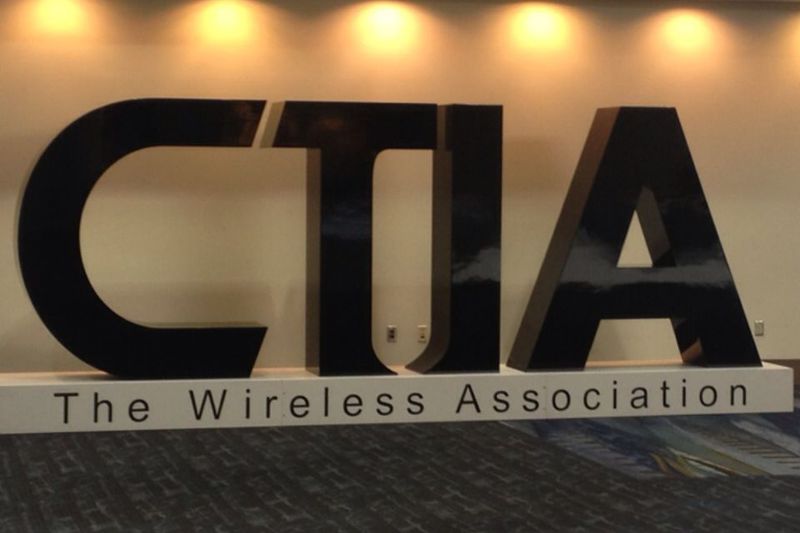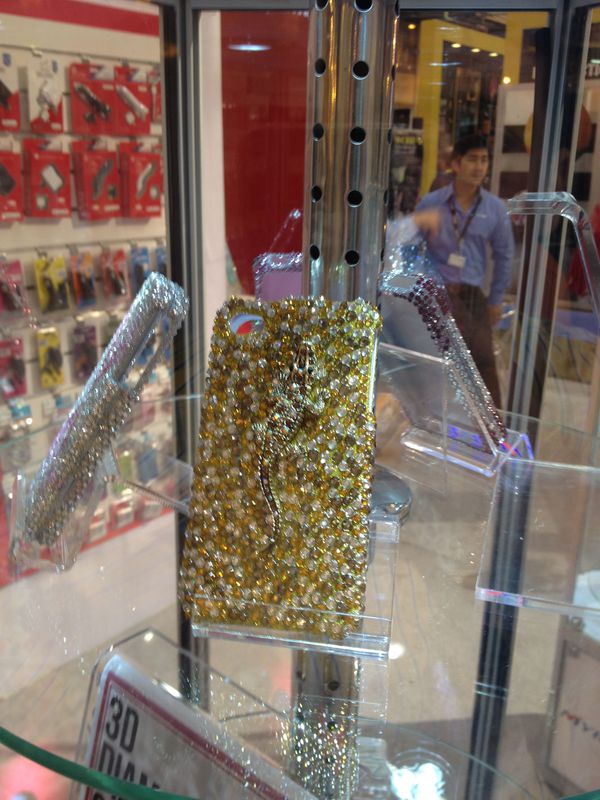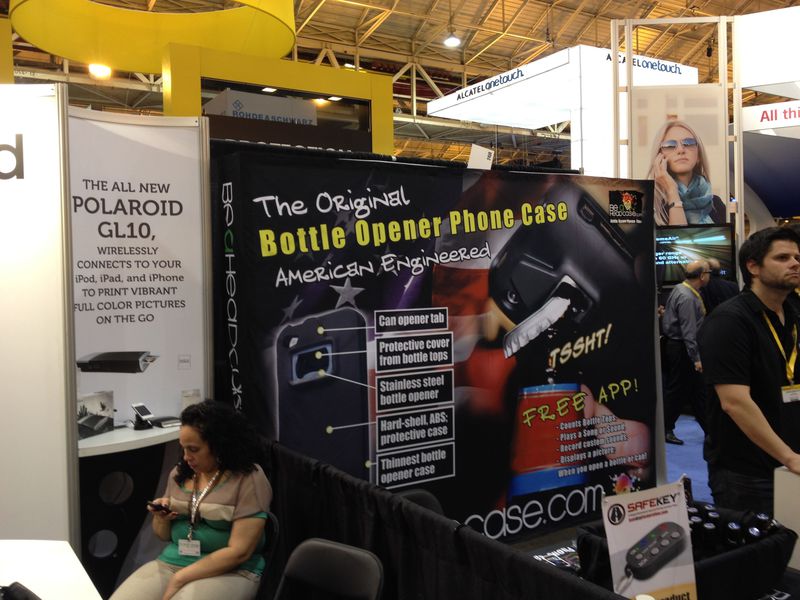In the wake of International CTIA wireless 2012

Attending conferences, especially profile ones, is very useful: as they say, show yourself and see others. This time I was able to visit the other side of the ocean, at the International CTIA wireless 2012 conference, which will be discussed in this topic. Under the cut impressions, photos, digest conference announcements. It will be interesting.
In fact, the event was divided into 2 main sections: an exhibition and a forum. In addition, several partner events, both paid and free, took place in parallel, all in forum format. Since we managed to spend most of the time at the exhibition, it is probably worth starting with it.
The conference center in which the event took place is a large-scale building more than a kilometer long, in 3 floors, within the walls of which one can hold clearly much more significant events. Indeed, despite the fact that, according to the organizers, more than 1,000 companies were exhibiting, together with the forum the whole event occupied less than half of the available area of the building.
Unlike the Mobile World Congress (hereinafter referred to as MWC) in Barcelona, the absence of the need for a transition between the pavilions was extremely convenient, with a stable heat standing outside. If we continue to compare with the MWC, we can safely say that the exhibition part of the event is not only smaller in size, but also less ambitious in terms of the stands of the represented companies.
')
First, companies such as Samsung, Nokia and Microsoft were not exhibiting at the exhibition. The manufacturers of carrier systems were almost completely absent, so the exhibition was held without the attraction “CBOSS girls”. The main part of the companies preferred small standard stands on 10 meters, which made it possible to create slim lines and fit a huge number of companies in a relatively small area. Those companies that nevertheless built more large-scale stands could not save the situation and against the background of the huge structures that they created at the MWC, everything looked more than modest. Some even made up for it with dancing .
An attentive reader will ask, who was then at the exhibition? The exhibition was divided into thematic sectors, the main ones being occupied by equipment manufacturers for operators (antennas, generators, etc.), and many of them brought this equipment with them; they were followed by manufacturers of test equipment and related technologies that measure the network from all possible sides; the list was completed by manufacturers of Chinese phones that offered their equipment for every taste, from dams to smartphones. But all the records were broken by the manufacturers of "skins" and peripherals for Apple products: all sorts of options just poked in the eyes.
 Offered as simply colorful cases, and inlaid with semiprecious stones, shock / radio / not-understand-of-what-protective coatings, and even the admin version with a beer opener (of course, also with its software).
Offered as simply colorful cases, and inlaid with semiprecious stones, shock / radio / not-understand-of-what-protective coatings, and even the admin version with a beer opener (of course, also with its software). 


At the same time, developers of mobile platforms or mobile software were presented more than modestly: a small glass “aquarium”, where they explained the advantages of developing for NOOK from Barnes & Nobles, and next to them several tables with software developed for different platforms. The list ends here. No company has conducted any courses, lectures or anything similar.
If we continue the analogy with the MWC, the cut of the represented companies differs in polarity. At MWC, there were only a couple of modest stands with peripherals for the Iphone, the bulk of the devices were represented by eminent brands that were traditionally represented by new items, and not by Chinese manufacturers. In Barcelona, many companies gave lectures for developers, and indeed a separate App Planet Pavilion for developers was given. At CTIA 2012, there were also no representatives of foreign operators, who usually occupy huge stands at MWC, so, against the background of the absence of large well-known phone manufacturers, the word international in the name of the event seems more than strange and is justified only by a large number of phone manufacturers and peripherals from Asia.
“Nightlife” life also did not please: many companies either did not arrange parties, or carefully hid them, which ultimately led to the fact that those who managed to get there were almost empty and communication outside the event, which often leads to the most important Contacts did not work out. The situation was saved by Bourbon Street, with an endless number of pubs with live music, where exhausted workers of the mobile industry rested.
In defense of the organizers it is worth describing the place itself and a fairly competent organization. Also, there were some announcements and events that revived the event a bit (and I'm not talking about the dances mentioned earlier).
Mastercard introduced a new tool that demonstrates the readiness of different countries to mobile payments, the meaning of which, as a representative of the mobile payment industry, was little understood. The level of readiness of Colombia, Germany, Russia, Nigeria and Vietnam is almost the same, while the level of distribution of credit cards or the normal banking system in these countries is different. And the other indicators do not have a clear static base and are clearly made to create the possibility of playing with the final indicators of a particular country. In fact, only the infrastructure affects the use of one or another technology: in Russia, SMS payments are much more popular than in the USA, where the main share falls on cards and PayPal (again, via cards). But the readiness of the Russian average person to buy something virtual on the Internet for SMS cannot be called readiness for mobile payments through cards, since all other payments will still be made in cash. By the way, at the exhibition there were representatives of Qiwi, who showed their terminals to the public. The quite logical question about why they are needed in the USA was given the quite expected answer that credit cards and PayPal work well for residents, but non-residents, who are also large, face problems in paying bills and prefer cash as the main method payment
As mentioned earlier, the event did without big announcements. A bit of news from Nokia, the ambitious new company PLUM and some others. The most notable event of the forum was the speech of Bill Clinton on the last day of the event, which noted the super important influence of the mobile industry on the world economy and politics.
Summarizing, we can say that the event described is clearly lagging behind its competitor, and for those who visit the MWC every year, the need to visit CTIA is no longer necessary. To get a complete picture of the forum part of the event and to confirm this conclusion, it is worth reading this post (eng.), The general meaning of which is reduced to the fact that as long as CTIA remains an internal crowd of American operators, the event does not have a bright future.
Source: https://habr.com/ru/post/144031/
All Articles